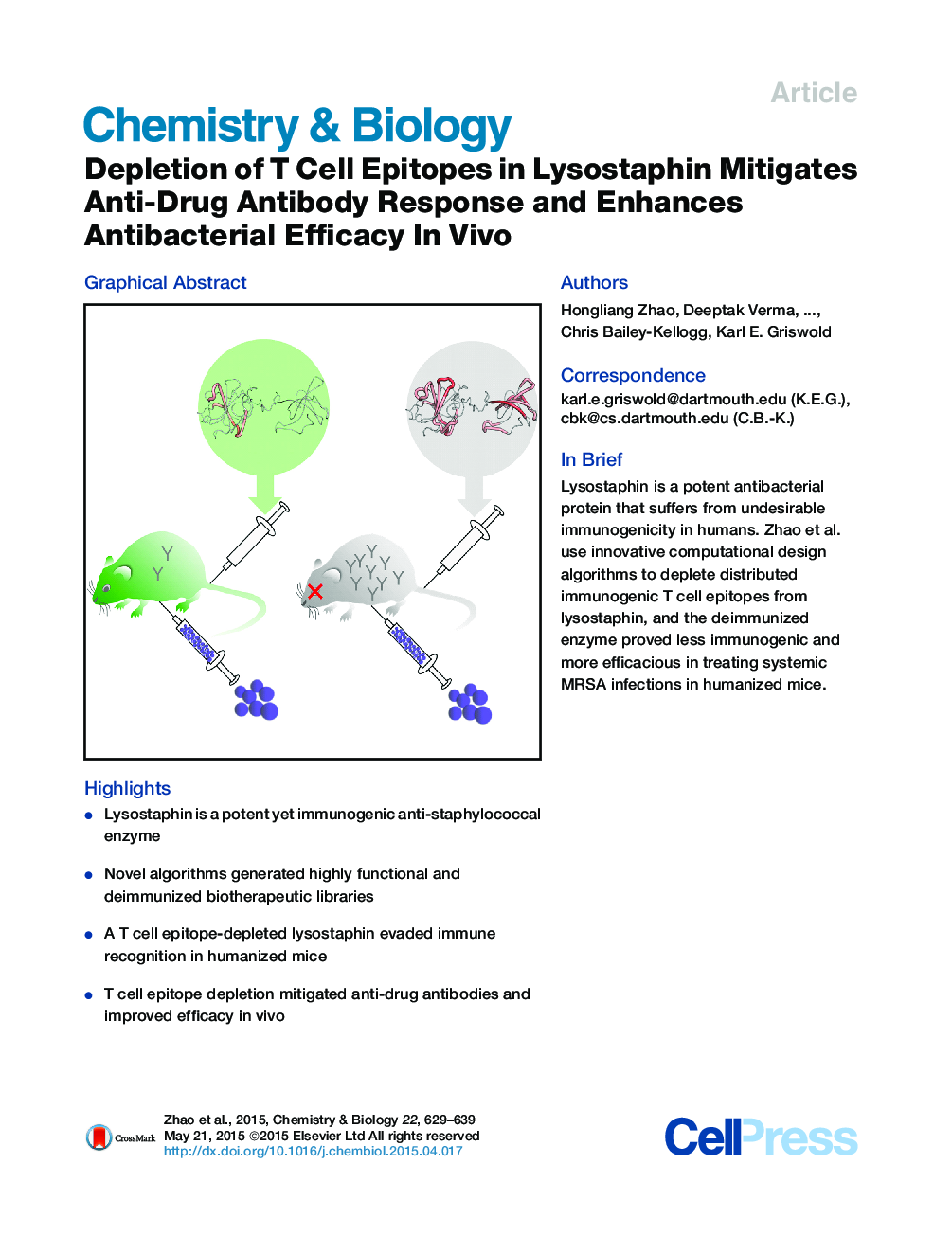| Article ID | Journal | Published Year | Pages | File Type |
|---|---|---|---|---|
| 1391978 | Chemistry & Biology | 2015 | 11 Pages |
•Lysostaphin is a potent yet immunogenic anti-staphylococcal enzyme•Novel algorithms generated highly functional and deimmunized biotherapeutic libraries•A T cell epitope-depleted lysostaphin evaded immune recognition in humanized mice•T cell epitope depletion mitigated anti-drug antibodies and improved efficacy in vivo
SummaryThe enzyme lysostaphin possesses potent anti-staphylococcal activity and represents a promising antibacterial drug candidate; however, its immunogenicity poses a barrier to clinical translation. Here, structure-based biomolecular design enabled widespread depletion of lysostaphin DRB1∗0401 restricted T cell epitopes, and resulting deimmunized variants exhibited striking reductions in anti-drug antibody responses upon administration to humanized HLA-transgenic mice. This reduced immunogenicity translated into improved efficacy in the form of protection against repeated challenges with methicillin-resistant Staphylococcus aureus (MRSA). In contrast, while wild-type lysostaphin was efficacious against the initial MRSA infection, it failed to clear subsequent bacterial challenges that were coincident with escalating anti-drug antibody titers. These results extend the existing deimmunization literature, in which reduced immunogenicity and retained efficacy are assessed independently of each other. By correlating in vivo efficacy with longitudinal measures of anti-drug antibody development, we provide the first direct evidence that T cell epitope depletion manifests enhanced biotherapeutic efficacy.
Graphical AbstractFigure optionsDownload full-size imageDownload high-quality image (114 K)Download as PowerPoint slide
